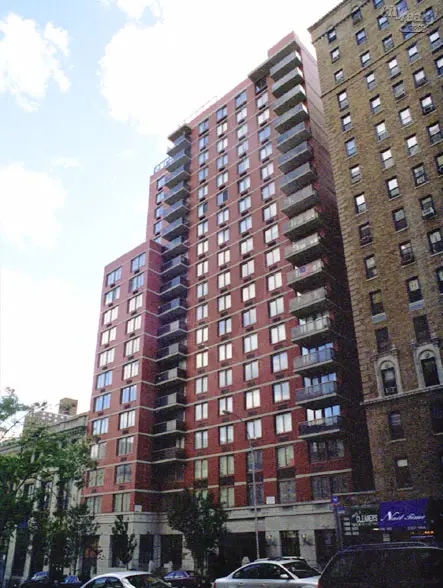The Parkview, 108 East 96th Street: Review and Ratings
between Park Avenue & Lexington Avenue View Full Building Profile


This relatively modest, 19-story, midblock building was the subject of one of the city's fiercest controversies over zoning and widely became known as the "too-tall" building.
The developer had received approval from the city's Buildings Department to erect a 31-story apartment tower, which was nearing completion when community groups protested that it was too tall for the site's zoning and would be deleterious to the neighborhood.
The dispute centered on how close the tower was to an historic district and the placement of the tower on the site. What was critical in the controversy was a zoning map that had erroneous information.
The project's critics maintained that the tower was not permitted within 100 feet of Park Avenue and that the developer and the city had used an outdated zoning map. The critics were successful in forcing the city to require the developer to remove the top 12 floors!
The developer had unsuccessfully offered to provide the community with important amenities instead of such a drastic solution as the demolition of the top 12 floors of the tower. Some of his offers included making a substantial numbr of units available for low-income residents in the neighborhood as this major cross-street is the traditional dividing line historically between the Upper East Side and East Harlem.
The civic groups, however, were adamant in their opposition to any compromise and rallied behind the principle that the city's zoning should not be compromised, despite the fact that it is regularly and despite the fact they had not discovered the problem earlier and the city's Buildings Department, and not the developer, was at fault for if the department does not know the correct zoning for a site how can a developer or architect be held accountable?
Such common-sense questions, of course, matter little in the community politics of the city and many community groups have made valuable contributions to other planned projects.
What was particularly interesting about the community's intransigence here was the fact that the developer had not put up more units than he was allowed and that he could have easily complied with their interpretation of the zoning by shifting the tower a bit to the east on the site since he had enough street frontage to accommodate such a change.
In addition, much bigger and taller buildings were two blocks away on Madison Avenue to the east and two blocks away on 96th Street to the east, to say nothing of the mammoth main building of Mt. Sinai Hospital a few blocks to the north on Madison Avenue.
Although this was the most egregious example of the NIMBY (Not In My Back Yard) Syndrome in the city, virtually no one came to the defense of the developer who lost several million dollars as a result of the controversy. In the end, the developer lopped off the top 12 floors and added a wing to accommodate the "decapitated" units on the east site of the tower.
Although the tower was not very distinguished, the resulting, squatter building is less than inspired, although attractive.
The Carnegie Hill neighborhood is one of the most desirable in the city with many cultural institutions, fine schools and many religious institutions and many very attractive residential buildings.
The proposed tower would have been no less attractive than some of the other buildings on the block.
In their vehement refusal to accept a compromise that would have provided much needed low-income housing, the community activists indicated that their motives may not have been entirely altruistic and the villain in this sad tale was not the developer. In their defense, of course, one can note that not every real estate developer in the city has always created masterpieces or sensitive urban planning and architectural diesgn and that most are very skilled at finding loopholes in the city's regulation of buildings.
While many community groups might be leary and wary about real estate development, their vindictiveness in this case was remarkable as was the lack of leadership on the part of the city's politicians.
This red-brick building has a concierge, a health club, video security, storage space, a sundeck, valet service, marble baths, balconies and a one-story limestone base.
It is very convenient to public transportation, excellent neighborhood shopping and many schools. It is also not far from Central Park.
 6sqft delivers the latest on real estate, architecture, and design, straight from New York City.
6sqft delivers the latest on real estate, architecture, and design, straight from New York City.
